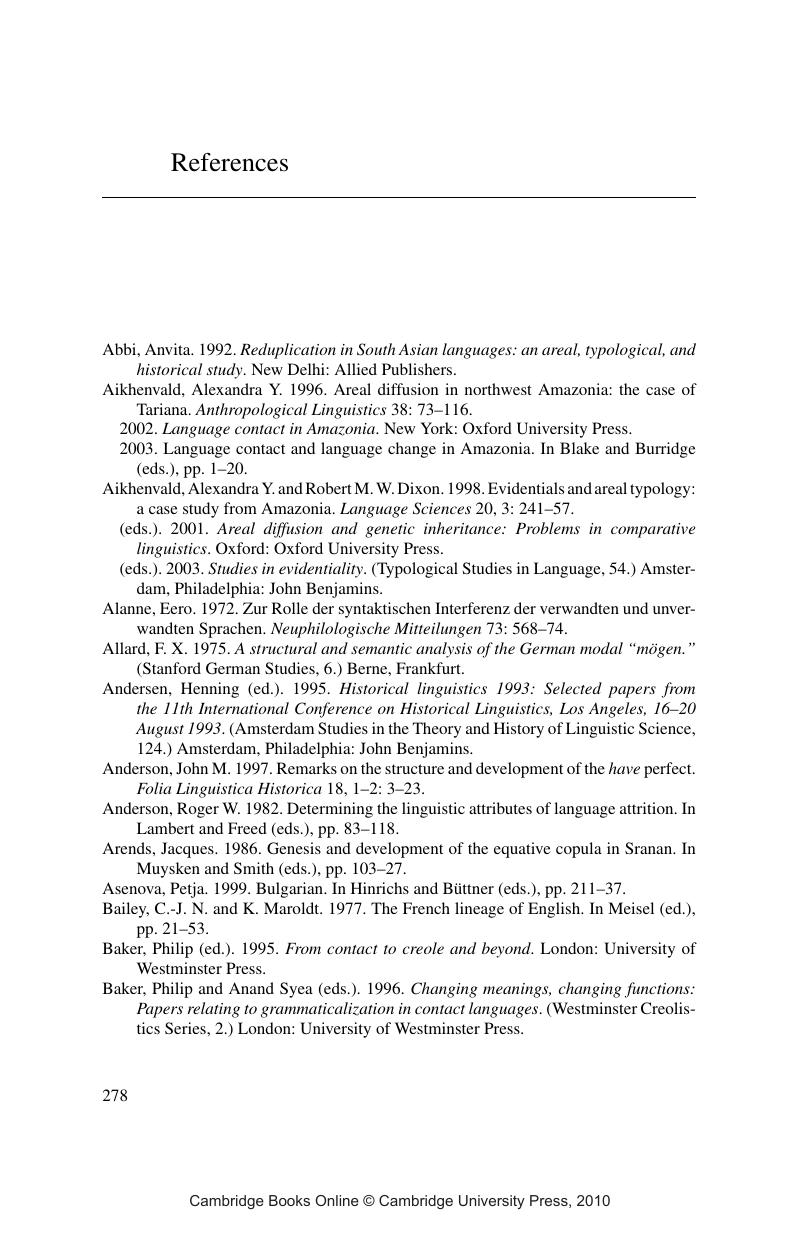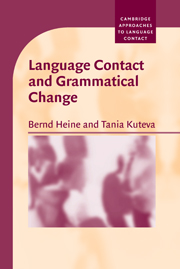Book contents
- Frontmatter
- Contents
- List of maps
- List of tables
- Series editor's foreword
- Preface
- List of abbreviations
- 1 The framework
- 2 On replicating use patterns
- 3 Grammaticalization
- 4 Typological change
- 5 On linguistic areas
- 6 Limits of replication
- 7 Conclusions
- 8 Notes
- References
- Index of authors
- Index of languages
- Index of subjects
- References
References
Published online by Cambridge University Press: 13 November 2009
- Frontmatter
- Contents
- List of maps
- List of tables
- Series editor's foreword
- Preface
- List of abbreviations
- 1 The framework
- 2 On replicating use patterns
- 3 Grammaticalization
- 4 Typological change
- 5 On linguistic areas
- 6 Limits of replication
- 7 Conclusions
- 8 Notes
- References
- Index of authors
- Index of languages
- Index of subjects
- References
Summary

- Type
- Chapter
- Information
- Language Contact and Grammatical Change , pp. 278 - 299Publisher: Cambridge University PressPrint publication year: 2005



